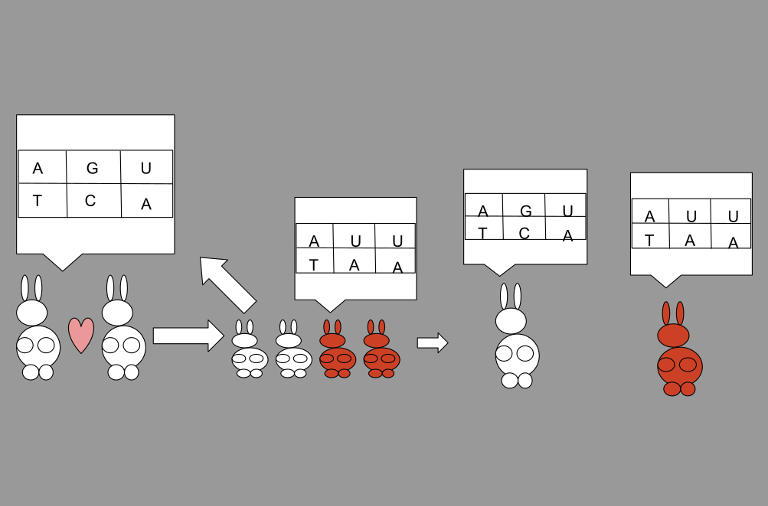It’s refreshing to find a reporter capable of asking probing questions about the the dangers of human genetic engineering. The central question BBC reporter Zaria Gorvett asks is whether genetic alterations due to genetic treatments can make their way into future generations. (She asks many other questions, too.)
The answer researchers give is that they do not know. They believe they can reduce the likelihood over time, but could never reduce it to zero.
The first question you may ask is why passing on genetic alterations through procreation would be a bad thing if those alterations were meant to cure a genetic disease or alter an unfavorable trait. The answer is that it depends on what one means by “bad thing” and “unfavorable trait.”
I’ve covered some of this issue in a previous piece entitled “Genes, synecdoche and the possibility of editing ourselves.” It is important to recognize that traits that we believe are “favorable” or “unfavorable” may just be based on cultural ideas, not on how much they contribute to our survival and well-being. Then there is the more vexing problem of determining what we mean when we say “trait.” There are scientific definitions. But in the end definitions are sets of words and we are simply back to where we started. Words are always imprecise and ambiguous by their very nature and mean different things to different people to which we can add different contexts and different cultures.
Editing human genes above all assumes precision in understanding what one is trying to do and precision in execution of the editing. As Gorvett points out, there are plenty of problems in trying to execute gene editing with precision. As for understanding what one is trying to do through the imprecision of words, Gorvett doesn’t comment.
I cover the “word” problem in some detail in this piece. Let me quote from that piece:
An emerging understanding of how genes work suggests that all genes may be implicated in complex traits. Called the omnigenic model, it posits that no one set of genes is responsible for the complex traits we see in animals and plants. Some genes may be more important than others. But all act in concert to create a complex trait.
So what is a complex trait? Here’s a formal definition: “A trait that does not follow Mendelian Inheritance patterns, is likely derived from multiple genes, and exhibits a large variety of phenotypes.” It turns out much of what we want to manipulate in genomes relates to complex traits. Parkinson’s disease and diabetes are related to complex traits. There will be no editing those out of the human genome.
Maybe we can just focus on the “simple traits.” It turns out that simple traits are rare in nature and altering them may not help us that much. (Here’s a list.) Most traits involve not only the complex interactions of many genes but also the environment in which the living organism finds itself. This, of course, moves us into the field of epigenetics which the Centers for Disease Control and Prevention defines this way: “Epigenetics is the study of how your behaviors and environment can cause changes that affect the way your genes work.”
Let me return to the issue of risk—in this case the risk of passing genetically engineered DNA down through the human generations. The scientists quoted by Gorvett say they cannot reduce the chance of this to zero. So, let’s say they can reduce the risk to one percent. That seems very low.
Now imagine we are playing Russian roulette using a gun with 100 chambers in which only one bullet has been loaded. If we pull the trigger one or twice, there is indeed a very small chance that we will kill ourselves. But, if we place the gun to our heads and pull the trigger 100 times, we will almost certainly perish.
We don’t know what passing on such altered human genes down many generations would do to the survivability and well-being of the human race. What we can surmise from my Russian roulette illustration—whether we use a gun with 100, 1,000, 100,000 or 1 million chambers—is that once genetic treatments get going, it is almost inevitable that those alterations will be inherited by offspring in some cases. Medical practitioners are not going to help just a few people with this technology when they can help millions and even hundreds of millions.
This is not a risk confined to the genetic treatment of humans. We see it in any mass phenomenon where the risk of a ruinous outcome is perceived as small, for example, the genetic engineering of plants, animals and insects for various purposes. We are unknowingly manipulating highly complex systems without understanding the implications.
We are better off if we try to understand those complex systems and move in accord with them. But that’s just considered old-fashioned thinking in a world where we have come to believe at our peril that we can engineer away any problem.
Image: Genetic Variation and Inheritance (2018) Parents have similar gene coding in this specific situation where they reproduce a variation in the offspring as seen. Offspring containing the variation also reproduce and passes down traits to their offspring. By SaulU123. https://commons.wikimedia.org/wiki/File:Genetic_Variation_and_Inheritance.svg






